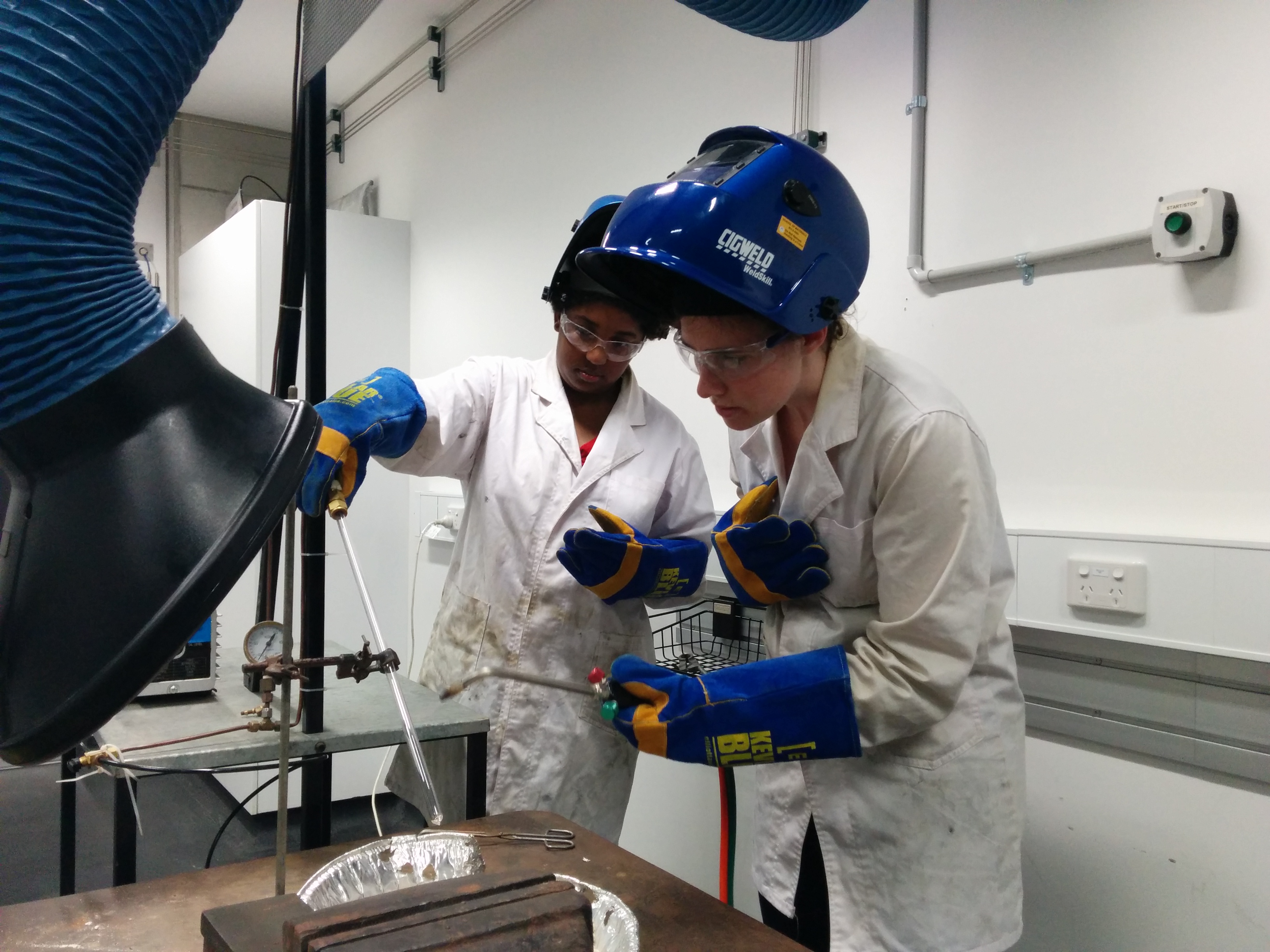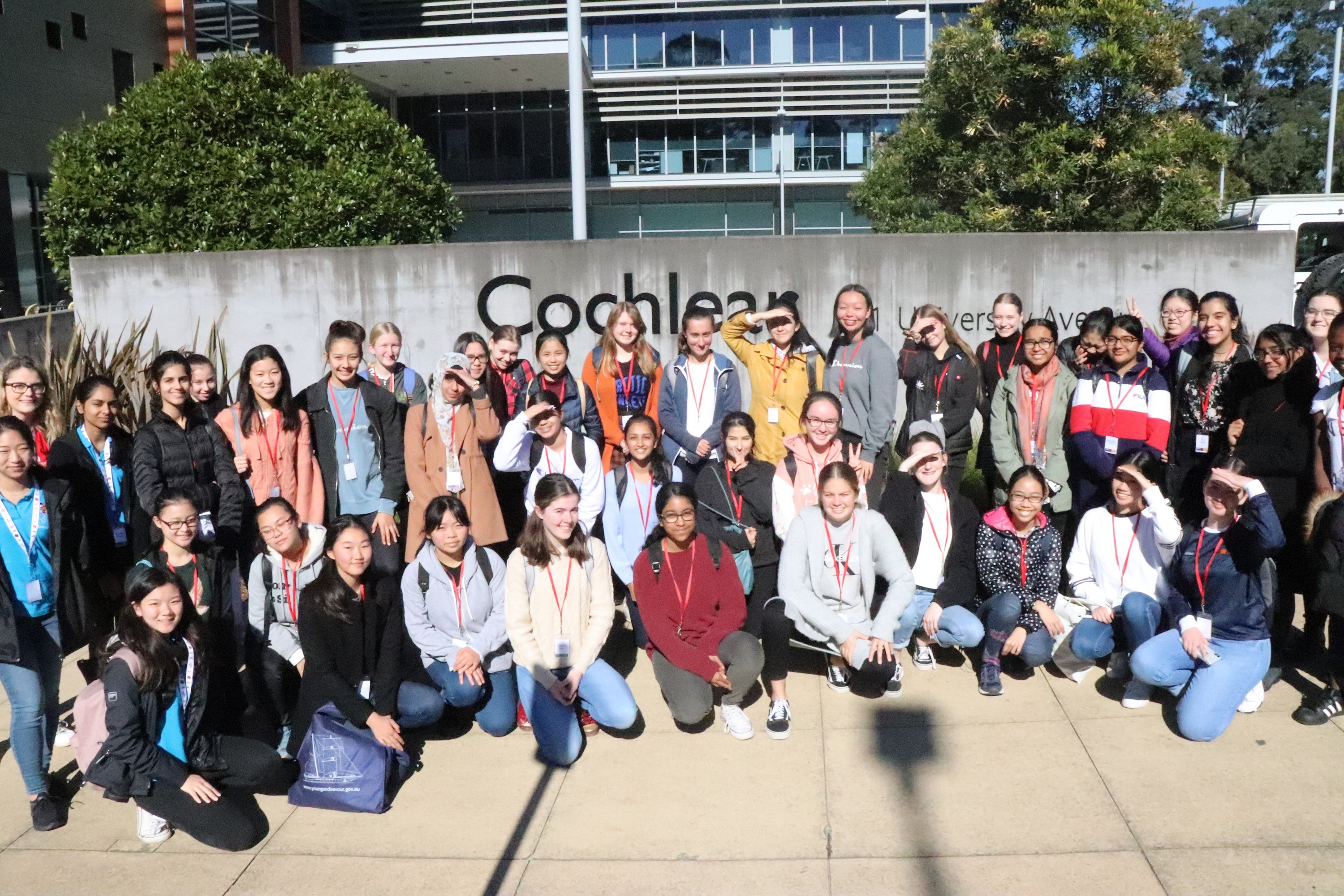By Sara Loo
Caitlin Healy is a lecturer in Materials Sciences and one of our Early Career Researcher Champions. She remembers always being interested in science, and certain moments stick out for her as having cultivated this passion for science.

Thinking back on her days as a budding little investigator she says, “I have very vivid memories of sitting in class and making mazes out of aluminium foil and paper, and then you got a light bulb and a battery and connected it to each side until you found the right pathway.”
She recalls her Year 2 teacher who taught this electricity lesson as one who “just ran a whole bunch of science experiments.” Not only that, but “for some reason [her] tiny little school (that was Kindergarten to Year 2 [with] probably 30 kids in the entire school) got an outreach science program to come in. So [they] just had an entire day of science activities.” She says of those activities, “I think it brainwashed me.”
This excitement for discovery through science stuck with Caitlin throughout the years. While deciding what to do after high school, she attended the UNSW Open Day and it was there that her interest in engineering and materials sciences was sparked. “You can do everything from producing samurai swords to biological implants to surfboards.”
Throughout her undergraduate degree, she was a persistent and passionate learner, leading her to “bug [her] lecturer” for an honours project researching metals. Her research has since focused on high-entropy alloys. This is a new field of research where compositions of metals are close to equal concentrations. While initially thought to result in brittle, undesirable alloys, what results from these compositions is “very simple structures, solid solutions and… better properties; better corrosion resistance, better strength.”
One exciting discovery that has led to continuing research was one she happened upon by accident during her doctoral research. One day, while mixing some mostly silver elements, Caitlin’s alloy came out a surprising burnt-orange-golden colour. Since then, she has been trying to alter the colour of precious metals in a range of ways, and is now working on a colour palette for these alloys.

There is a lot of interesting science behind the compositions of these alloys, and they may have a number of commercial and decorative purposes. In the field, research continues to try to understand the mechanical properties of these alloys. For example, can UV light reflect off these metals? One such fascinating example from the field involves forcing a metal alloy to have no structure by cooling it rapidly. This process turns it into a glass. While golf clubs have been made out of these metallic glasses to make golf balls go twice as far, don’t expect any winnings from this – they have been banned in competition.
This combination of mixing substances and contraband materials might conjure the image of Caitlin standing in her laboratory, lab coat on, surrounded by beakers and bubbling cauldrons of liquid metals. If it does, the Year 2 version of Caitlin who was captivated by batteries and aluminium foil might be beaming with pride – she has always “wanted to be a mad scientist.”
Though the madness is hidden during our casual chat over coffee, her enthusiasm for being a scientist is evident and infectious. It is this infectiousness I’m sure she will take to her students as she continues teaching, supervising and inspiring other budding (mad) scientists.
Follow Sara on Twitter




